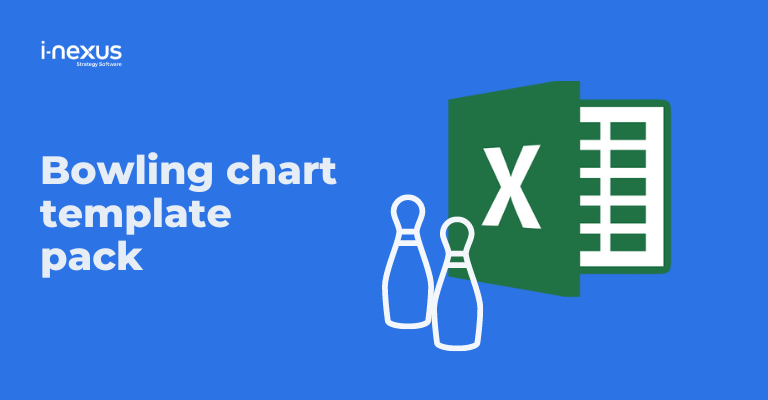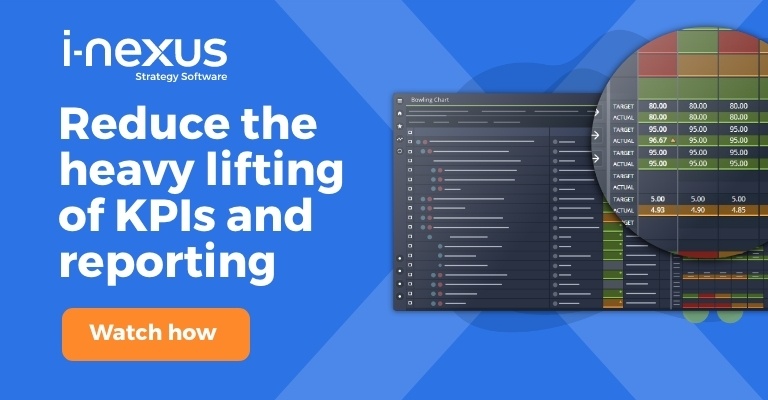Learn all you need to know about KPIs - from what makes a KPI a KPI, to the challenges you'll face with building them and collecting data - all inside our guide to business KPIs.
KPIs are invaluable for accountability, keeping everyone on the same page, and monitoring the health of your business.
If you already know what KPIs are and need help choosing some, this blog can show you how to write KPIs, and help you decide which KPIs and targets are right for your business.
- What are business KPIs?
- Examples of business KPIs
- What do you need to consider when setting KPIs?
- How many KPIs should you set?
- How should you write out your KPIs?
- What are the challenges of KPIs?
What are business KPIs?
In a nutshell, KPIs (key performance indicators) are benchmarks used to measure strategic performance and success in achieving goals.
KPIs can be broad and company-wide, departmental, or attached to specific projects.
They can even be set for individuals. KPIs are one of many measurements that can be taken and used to influence business strategy.
Examples of business KPIs
1. Sales KPIs
Sales KPIs are a type of metric that is used to track and measure the performance of a company's sales team.
Some common sales KPIs include sales productivity measures, such as the number of calls made or the number of new leads generated.
Sales KPIs can also be used to track customer satisfaction levels, such as the number of repeat customers or the percentage of customers who would recommend the company to others.
2. Marketing KPIs
Marketing KPIs are a type of metric that is used to track and measure the performance of a company's marketing team.
Some standard marketing KPIs include measures of brand awareness, such as the number of people who have seen or heard an advertisement for the company.
Marketing KPIs can also be used to track customer acquisition rates, such as the number of new customers acquired through marketing campaigns.
3. Financial KPIs
Financial KPIs are a type of metric used to track and measure a company's financial performance.
Some typical financial KPIs include profitability measures, such as net income or return on investment.
Financial KPIs can also be used to track cash flow, such as operating cash flow or free cash flow.
4. Operational KPIs
Operational KPIs are a metric used to track and measure a company's operational performance.
Some common operational KPIs include efficiency measures, such as asset or inventory turnover.
Operational KPIs can also be used to track employee productivity, such as the number of widgets produced per hour.
5. Strategic KPIs
Strategic KPIs track and measure a company's progress toward its strategic goals.
Some common strategic KPIs include market share measures, such as the percentage of the market share held by the company in its industry.
Strategic KPIs can also be used to track customer satisfaction levels, such as the percentage of customers who are "very satisfied" with the company's products or services.
What do you need to consider when setting KPIs?
You can’t set KPIs without first understanding your organization's strategic objectives.
If these goals aren’t already defined, you may struggle with deciding on KPIs and fall into the trap of setting KPIs that are only focused on financial results, which is not the only way to measure a business’s overall performance.
These objectives need to be:
- Easily understood primarily if they’re cross-departmental because not all areas of a business use the same jargon
- Specific - doing “more” of something or doing something ”better” isn’t a goal because it is undefined
- Ambitious - while setting achievable goals is good, they must also be worth striving for, not just an inevitability.
- Timebound - setting a goal that has no time limit is an excellent way for it never to be achieved
Once these goals are laid out, you can select relevant KPIs. Below are some goal categories and KPIs that would be relevant to them:
- Goals focused on customer satisfaction - average customer ratings; complaints received; net promoter scores
- Goals focused on efficiency - the average time taken to complete a task; true downtime cost; LOB efficiency measure
- Goals focused on finance - debt to equity ratio; net profit margin; operating margin
How many KPIs should you set?
Not at many as you think, and, if you can help it, no more than four per goal.
If you set more than four, it is likely that they are just performance indicators and aren’t actually as ‘key’ as you think they are.
Something you think may be a KPI is not as crucial as you think, which can be frustrating if you have already spent time measuring and reporting on it.
Focusing on the wrong performance indicators also has the potential to lead you off course from your goals. When this happens, revisit your strategic objectives and try again.
It is essential always to have more than one KPI, however, as you typically need at least two to measure:
a) something you want to see improvements that can predict potential changes, and
b) a current metric that needs to be monitored but may not be as susceptible to change.
How should you write out your KPIs?
KPIs must be written to make it obvious how you plan to capture the data needed to track them.
This links back to their need to be specific, not vague or subjective. Each KPI needs a quantitative way for it to be measured.
It is also essential to link each KPI target back to the goal it supports.
This enables your employees to truly understand what they are working towards and why which is good for employee engagement and productivity. As you delegate your KPIs to the relevant teams, getting feedback on how well they are understood is essential.
There should also be a clear idea of how often your KPIs need to be measured weekly, monthly, or quarterly.
These KPI reports are essential in tracking your business's health.
To summarise, each KPI needs:
- a data source; a unit of measurement for this data
- a link to an overarching goal, and a reporting frequency
With the help of this formula, your KPIs should be clear and achievable.
Example
If your goal was to decrease employee turnover (which can reduce costs in the long run), one of your KPIs might look like this:
KPI: Overall retention rate.
Data source: Employees.
Unit of measurement: Number of employees who remain with your business.
Link to goal: Retaining employees is good for business.
Reporting frequency: Yearly.
To calculate this percentage, you would divide the number of employees who stayed over the course of a year by the number of employees at the start of the year and then multiply by 100.
What are the challenges of KPIs?
There are several challenges to creating key performance indicators (KPIs):
-
Identifying the right KPIs
Choosing relevant and meaningful KPIs for your organization's goals and objectives is important. This requires a thorough understanding of your business and what you want to achieve. -
Setting appropriate targets
Setting too easy or too tricky can undermine the effectiveness of your KPIs. It's important to set targets that are challenging but achievable. -
Ensuring data accuracy
The success of your KPIs depends on the accuracy and reliability of the data used to measure them. It's crucial to ensure that your data sources are reliable and that you have a process in place for regularly checking and verifying the accuracy of your data. -
Ensuring buy-in from stakeholders
For your KPIs to be effective, it's vital that everyone in your organization understands and supports them. This requires strong communication and collaboration to ensure everyone is on board with the chosen KPIs and understands how they align with the organization's goals. -
Managing changes in business goals and objectives
As your business evolves, your KPIs may need to change as well. It's important to regularly review and update your KPIs to ensure they remain relevant and meaningful.
Execute your strategies with i-nexus
We have the solutions for tracking KPIs and helping you deploy your strategy. Whether we can be a tool in your arsenal or the difference in helping you reach your goals, we can help to keep everything you want to achieve aligned.
Our tracking tools can turn data into a crystal clear overview of your business’ performance so that you have the information you need to keep striving for more.
See how the i-nexus software can help you plan and book a demo today.
Learn more about strategy execution
Take the next steps in your journey by exploring our strategy execution resource hub or any of the below:
- Key to strategy execution eBook: Read how companies like Danaher and HP have mastered strategy execution and what you can learn from them.
- What does it mean to be Business Agile?: Leap into the future of strategic planning and execution with this fascinating insight.
- How AI and Machine-Assisted Learning will help strategy execution: As Artificial Intelligence becomes a mainstay in our lives, read how AI and machine-assisted learning will evolve to support your strategy execution.
About the author
Sam Ancliff is the Demand and Lead Generation Manager at i-nexus.
In his role, his drive is to provide leaders with the tools and insights they need to make next-level decisions in their businesses and organizations.
If you’d like to talk more about strategy, contact Sam at sam.ancliff@i-nexus.com or connect with him on LinkedIn for the latest insights.





